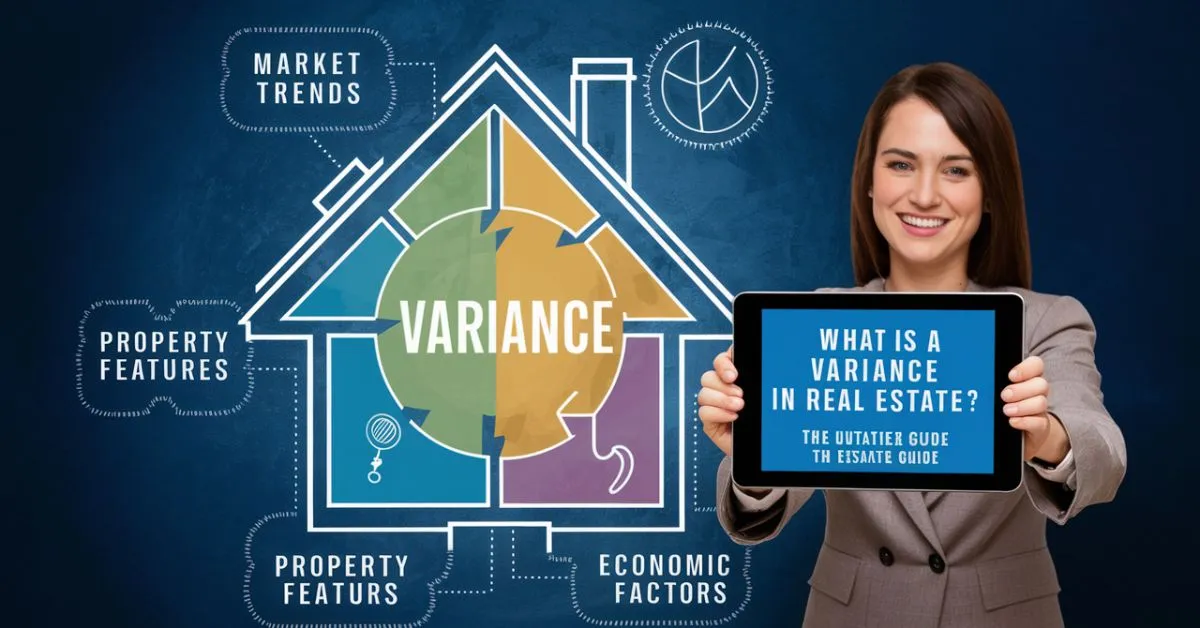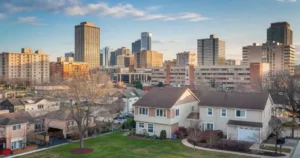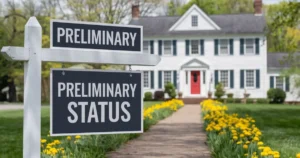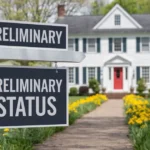A variance in real estate is a unique permission to deviate from local zoning laws. Zoning laws control how houses can be used and advanced in different regions. When property owners need to do something that these laws commonly don’t permit. They can apply for a variance in this situtation.
There are main types of variances: use variances and location variances. Use variances permit assets owners use their land in a way that the cutting-edge zoning doesn’t permit in a residential area. Place variances deal with physical changes towards the property line than the regulations permit.
To get a variance, property owners need to observe to the local zoning board. They need to show that following the zoning laws might cause unnecessary hassle. The variance won’t damage the community. If the board agrees, they provide the variance, permitting the assets owner to continue with their plans.
Understanding Zoning Laws and Regulations
Zoning laws are rules set by local governments to control how land can be used. They divide areas into zones, like residential, commercial, and industrial, and set specific rules for each zone. These laws help organize city growth and ensure compatible land uses.
For example, zoning laws might restrict the height of buildings or require a certain distance between structures. They also determine what activities can take place in different zones, like where businesses can operate. Understanding these laws is crucial when considering a variance.
What Are Zoning Laws?
Zoning laws are policies set by local governments to control land use. They divide areas into zones like residential or commercial, specifying what can be built and how properties can be used. These laws help organize city development and ensure that different land uses don’t clash.
How Zoning Laws Affect Property Use
Zoning laws control how assets may be used and evolved. They set limits on things like building length, top, and the styles of activities allowed. Those regulations ensure that land is utilized in methods that are compatible with surrounding regions and community wishes.
What is a Variance in Real Estate?
A variance in real estate is a special permission to do something specific from the usual regulations. For instance, if the zoning laws say you can only construct a one-story house, a variance might let you build a two-story residence rather.
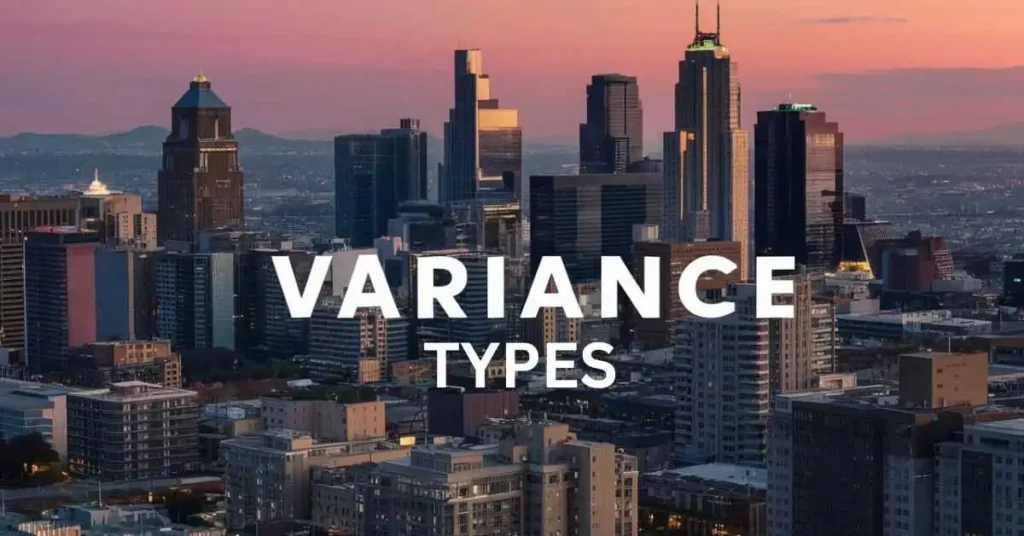
People request variances to make changes that suit their needs better. The local government reviews these requests and decides if the change is okay. They make sure the variance won’t harm the community or break other important rules.
Types of Variances
There are two main types of variances in real estate: use variances and area variances.
1. Use Variance
This allows a property to be used for something not usually allowed by the zoning laws. For example, it might let you open a small business in a residential place.
2. Area Variance
This permits changes to physical requirements, like building size or yard space. For instance, it could allow you to build closer to the property line than usually permitted.
The Application Process for a Variance
The application process for a variance begins with filling out a form from your local government and submitting it with any required documents, like assets plans. There is often a public hearing where you explain why you want the variance.
The local board reviews your request and makes a decision. If approved, you can proceed with your plans. If denied, you might be able to appeal.
Preparing for the Application
- Gather necessary documents, such as property plans and photos.
- Review zoning laws to understand the requirements.
- Prepare a clear explanation of why you need the variance.
- Be ready for the public hearing by practicing your presentation.
The Application Submission
To submit a variance application, start by filling out the required form from your local government. Attach all necessary documents, like property plans and photos. Submit the completed form and documents to the local planning office.
After submission, you can get hold of a confirmation and information about the subsequent steps, including a public hearing date. Make sure to maintain tune of any deadlines and reply to requests for additional information.
Public Hearing and Review Process
At the public hearing, you’ll present your case and explain why you need the variance. Community members and officials may ask questions or raise concerns. The local board reviews all the information, including your presentation and any feedback from the hearing.
After considering everything, they make a decision to approve or deny your request. You’ll be notified of their decision, and if accredited, you can flow forward with your plans.
Related Article: Is Real Estate a Good Career in 2024? The Ultimate Guide
Factors Considered in Granting a Variance

When deciding on a variance, officials consider if it will harm the neighbourhood or break other rules. They also look at whether the change is necessary for the property’s use. They check if the request meets specific criteria and if it’s in line with community goals.
Demonstrating Hardship
To demonstrate hardship for a variance, you need to show that following the zoning rules causes significant difficulty. Explain how the rules limit the use of your property and why they create a problem.
- Provide evidence that the current rules are too restrictive.
- Show that the variance is needed to make reasonable use of the property.
- Explain how the hardship is unique to your property and not a general issue.
Impact on Surrounding Properties and Community
When applying for a variance, you must display that it gained negatively affect nearby properties. Explain how the trade will fit in with the community and not reason any harm or lessen property values.
You also need to demonstrate that the variance won’t disrupt the community. Make sure it aligns with nearby plans and won’t create any troubles for residents or businesses in the region.
Pros and Cons of Obtaining a Variance
Obtaining a variance can help you use your property more effectively and make desired improvements. However, it can be time-consuming and there’s no guarantee of approval. Additionally, the variance might come with conditions or restrictions.
Advantages of Securing a Variance
- Allows for unique property uses that zoning laws usually don’t permit.
- Helps you make changes or improvements to your property.
- Can increase the value of your property by adapting it to your needs.
- Offers flexibility in meeting zoning requirements.
- Provides an opportunity to address specific property challenges or limitations.
Potential Drawbacks and Challenges

Obtaining a variance can be challenging because the process might take a long time and is not always guaranteed to succeed. You might face delays and additional costs while preparing and presenting your case.
There can also be restrictions or conditions attached to the variance that limit how you can use your property. Additionally, neighbors or community members might oppose your request, adding to the difficulty.
Related Article:Missteps in Real Estate: What Happens When Your Realtor Makes a Mistakes?
Case Studies and Examples
Successful Variance Applications
A successful variance utility frequently includes a clean clarification of why the variance is wanted and the way it won’t harm the network. Providing detailed documents and evidence that show how the change meets zoning requirements helps make a strong case.
Engaging with neighbors and addressing their concerns can also improve your chances of approval.
Unsuccessful Variance Applications
Unsuccessful variance programs regularly lack enough evidence or fail to clearly show why the alternate is needed. If the application doesn’t address network issues or if it conflicts with zoning laws, it’s probable to be denied. Negative preparation or lacking documents can also contribute to a rejection.
Market Trends
Market trends show how the real estate market is shifting over time. They include changes in property values, demand, and buyer preferences. Keeping up with these trends helps investors and buyers make informed decisions.
Frequently Asked Questions
What is a variance in real estate?
A variance lets you do something not usually allowed by zoning laws.
What are the main types of variances?
Use variances allow different property uses, and area variances allow physical changes.
How do I apply for a variance?
Fill out the form, attach documents, and submit it. You’ll also present your case at a public hearing.
What factors are considered when granting a variance?
They check if it harms the community, if it’s needed, and if it follows local goals.
What are some potential drawbacks of obtaining a variance?
The system can be slow, there’s no guarantee of approval, and there might be extra situations.
Final Thoughts
Obtaining a variance can be a valuable way to adapt zoning laws to better fit your property’s needs. It allows for unique uses and changes that standard rules might not permit, potentially enhancing property value and functionality. However, the procedure can be complicated, time-consuming, and might face competition from neighbors.
It’s vital to carefully prepare your application, virtually display the want for the variance, and address any issues from the network. Weigh the benefits and ability drawbacks before intending to ensure that a variance is the proper answer for your state of affairs.

Paul Mitchell, our website’s author, leverages 6 years of business expertise to provide insightful content. His wealth of experience enriches our platform, offering valuable insights for our readers.
